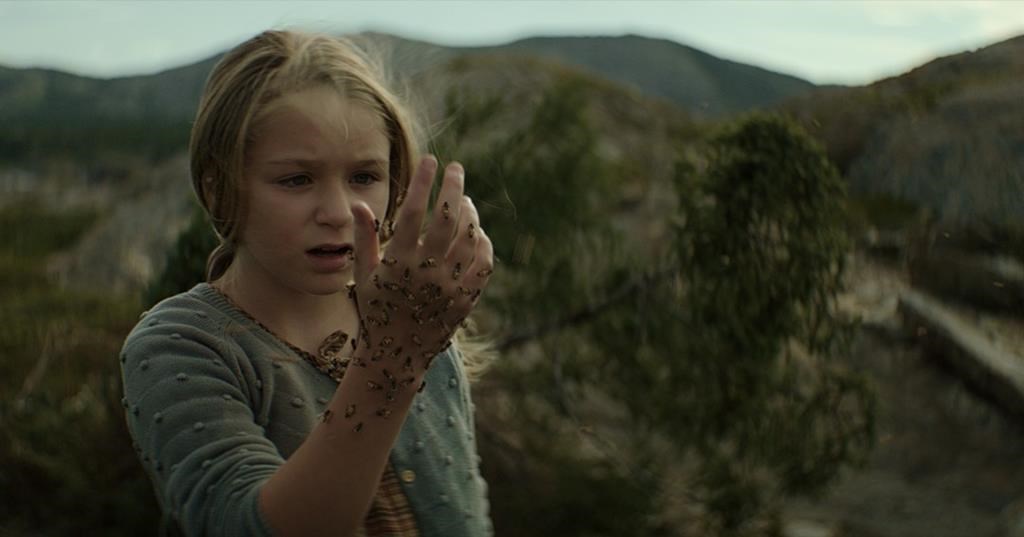Reviews
“What Remains of Edith Finch” is a Joyfully Haunting Experience

I was about a quarter way through “What Remains of Edith Finch” when I realized that I was looking for fear in all the wrong places with it. Much like “Gone Home,” I kept waiting for a ghost to materialize or the famous Finch Family Curse to rear it’s deadly head, but that moment never came. I had to sit on it for a little while, but I slowly realized that deep down “What Remains of Edith Finch” was giving me a sense of loss and painful nostalgia for people I’ve never met and a place I’ve never been more than any game has before.
From the start of the game to its somber-yet-uplifting finish, you’ll play as Edith. She’s made the trip to the home her family inhabited for three generations, the tradition ending with Edith and her mother. The reason for their premature departure isn’t clear early on, but a big contributing factor is the supposed curse I mentioned earlier. Oddly enough, members of the Finch family tend to die in extreme and bizarre ways. Basically, as long as its not old age, it’s fair game. That’s why as the game goes on, the journal Edith fills with the tragic history of her family’s past grows more and more important.
What sets this game apart from other “walking sims” as they’re (sometimes fondly, sometimes not) called, is that it finds a way to insert varied and inspired gameplay throughout it’s three-hour duration that is not only fun to play around with, but is also integral to understanding its story. As Edith makes her way through the Weasley-esque mansion, she relays the various personalities, and of course deaths of her family members. The cool thing about it is you actually get to play through these various memories.
As I played through the game, I kept waiting for one of the different mini-game memories to let me down. While the fun factor varies with each one, I’d be lying if I said I got bored with any of them. My favorite in particular involves a comic book inspired by the classic film, Creepshow along with a creepy classic theme song that I’m positive every player will recognize.
Despite the somber undertones in the game’s narrative, most of the stories will plant a grin on your face. Hell, some of them will even make you laugh. I felt a little conflicted at first about the tonal shifts, but I realized that if I kept dwelling on the fact that I knew these characters were going to die sooner rather than later, I’d miss out on the fun that I should be having during my brief time in their shoes. I think, and hope that I was meant to feel that way because it shows how firm Giant Sparrow’s grasp is on their narrative.
It’s kind of crazy that with such variation in the different playstyles in “What Remains of Edith Finch,” you’ll only need to master the use of the two thumbsticks and the R2 button. it doesn’t matter if you’re an owl hunting for its prey, a shark rolling down a steep cliff, or a scream queen hobbling through her house looking for an intruder, you’ll only use those three input methods.
On a technical level, I braced myself for the worst (frame rate stutters, slow-loading textures, etc), but I’m happy to say that the game ran flawlessly on my PS4 Pro and my custom PC. It looks incredible too. I can’t stress enough how much this game makes you feel like you’re actually visiting a real place. Giant Sparrow’s Ian Dallas was kind enough to tip me off to the fact that the game’s setting, Orcas Island, WA is in fact a real place, but the work they’ve all done to make an impossible house feel possible is astounding. There are some navigation problems that crop up, since the layout of a real house doesn’t really give you much in the way of contextual cues on where to go, but I never found myself stumbling around for more than a couple minutes at a time.
Since the vast majority of the story is delivered by Edith speaking (or thinking, it’s not really clear) to herself, the writing and voice acting are much more important than in most games. Luckily, Dallas and Tom Bissell’s writing skills paired with Valerie Rose Lohman’s vocal performance are a dream come true. Finally, when you throw in a score by Jeff Russo (“Legion,” “Fargo,” “The Night Of”), the game shapes up almost perfectly.
At first “What Remains of Edith Finch” felt a little too ambiguous and I was preparing myself to be let down, but as the credits rolled I felt a hole in my gut bigger than any game has left me with in a while. Family sticks with you no matter what, and we never know when our time is going to be up, and “What Remains of Edith Finch” is more than happy to show you. You just have to let it.

Reviews
‘The King Tide’: An Island Town Rots with Moral Decay in Canadian Folk Horror Fable [Review]

The opening scenes of director Christian Sparkes’ The King Tide set an ominous tone: a powerful storm takes down the power lines of a small island town as a pregnant woman loses her child while her dementia-suffering mother sits nearby. In the morning, as the town takes stock of the damage and the power is restored, a surprising discovery is found in an overturned boat in the harbour: a baby girl…with the ability to heal.
Writers Albert Shin and William Woods, working from a story by Kevin Coughlin and Ryan Grassby, treat the story as something of a morality tale mixed with a fable. Following the cold open, the action jumps ahead 10 years at a point when the unnamed island (the film was shot in Newfoundland, Canada) is thriving. The fishing is bountiful, the islanders are self-sufficient and have cut ties with the mainland, and most everyone is happy.
As characters are prone to saying, it’s all thanks to Isla (Alix West Lefler), the miracle baby who has grown up worshipped by the islanders. While Mayor Bobby Bentham (Clayne Crawford) and his wife Grace (Lara Jean Chorostecki) endeavor to raise Isla like any other little girl, the reality is that the island’s entire ecosystem revolves around her miraculous powers. It is only because of Isla that they survive; every aspect of their lives – from medicine to food – relies on her.
Each day the citizens line up for their allotted time with the young girl – be it to stave off breast cancer, like Charlotte (Kathryn Greenwood), or recover from another night of heavy drinking like former doctor, Beau (Aden Young). There’s even a predetermined schedule for when she will go out on the boats and use her power to lure fish into the nets.

One fateful day, Bobby succumbs to peer pressure and alters Isla’s schedule at the last minute to accompany cod fishermen Marlon (Michael Greyeyes) and Dillon (Ryan McDonald). A childish game with fatal consequences is played, but with Isla indisposed, a young boy, who would have otherwise been fine, dies. And while the rest of the community grieves, it is Isla who is completely shaken and, unexpectedly, loses her powers.
Suddenly the entire balance of the island is thrown off. Folks like Grace’s mother, Faye (Frances Fisher), who relied on Isla to keep her dementia at bay, suddenly reckon with mortality, while the food security of the town is called into question. Faye’s late-night “support group” meetings take on an urgent and secretive tone and the townspeople claim ownership of Isla’s time despite Bobby and Beau’s protests that she needs rest to recover from her trauma.
Like the best thrillers, the politics and personalities within the community come into play as morals are compromised and the good of individuals vs the collective is played out in increasingly desperate situations. The King Tide excels because it is interested in exploring the competing motivations of the townspeople, while also resolutely refusing to paint anyone as inherently good or bad. These are desperate people, determined to remain independent and free from outside interference, while protecting their trapped-in-amber way of life.

These developments work because there’s a humanity to the characters and The King Tide wisely relies heavily on its deep bench castoff character actors to drive the conflict. Crawford is the de facto protagonist of the ensemble and he’s also the most straightforward character: Bobby is a good man and a loving father, but he’s no white knight. At several points in the film, his willingness to acquiesce to the demands of the community and retain his power causes events to spiral further out of control.
Even more fascinating are Grace and Faye, two commanding women whose capacity for maternal love is matched – or eclipsed – by their own self-interests. A mid-film discovery about Isla’s power reframes Grace’s priorities, ultimately pitting her against her husband. As a result, Grace is incredibly compelling and frustrating (in a good way) and Chorostecki, who has done great genre work on both Hannibal to Chucky, plays the moral ambiguity exactly right. Grace is a fascinating and flawed human character in a film filled with them.
The same goes for Fisher, who deftly balances Faye’s grandmotherly love for Isla with the needs of the community and, by extension, her own health demands. In the hands of a lesser performer, it would be easy to hate Faye for her actions, but Fisher’s performance perfectly captures the fierce determination and fear that drives the island’s matriarch.
Finally, there’s Aden Young, The King Tide’s secret weapon. The ten-year jump reveals that Beau has undergone the most significant transformation: while everyone else has benefitted from Isla’s powers, her presence has eliminated the need for a doctor. With the clinic effectively shuttered, Beau has become an alcoholic; a shell of his former self with no purpose.
Like Bobby, Beau is the easiest character to root for because of his selfless desire to protect Isla, but Young (renowned for his work with Crawford on Rectify) unlocks the character’s tragic pathos and, in the process, becomes the film’s emotional anchor.

Framing the moral decline of the islanders and anticipating the unexpectedly devastating climax is the natural beauty of Newfoundland. As shot by cinematographer Mike McLaughlin, there’s a steely beauty to the geography, resplendent with rocky cliffs, pounding surf, and gusty bluffs that reinforce the islanders’ isolation.
There’s a fierce pride in their struggle to survive independently, evident in the simple lodgings and the antiquated alarm bell that is rung whenever fishing ships from the mainland stray too close. It’s a chilly, atmospheric calling card for one of the most picturesque provinces in Canada, but it is a perfect complement for the folk horror narrative.
Armed with serene, beautiful cinematography, murky moral developments, and a deep bench of talented character actors, The King Tide is a quiet gem that demands to be seen. It’s one of the year’s best genre films.
The King Tide is in theaters April 26, 2024.














You must be logged in to post a comment.